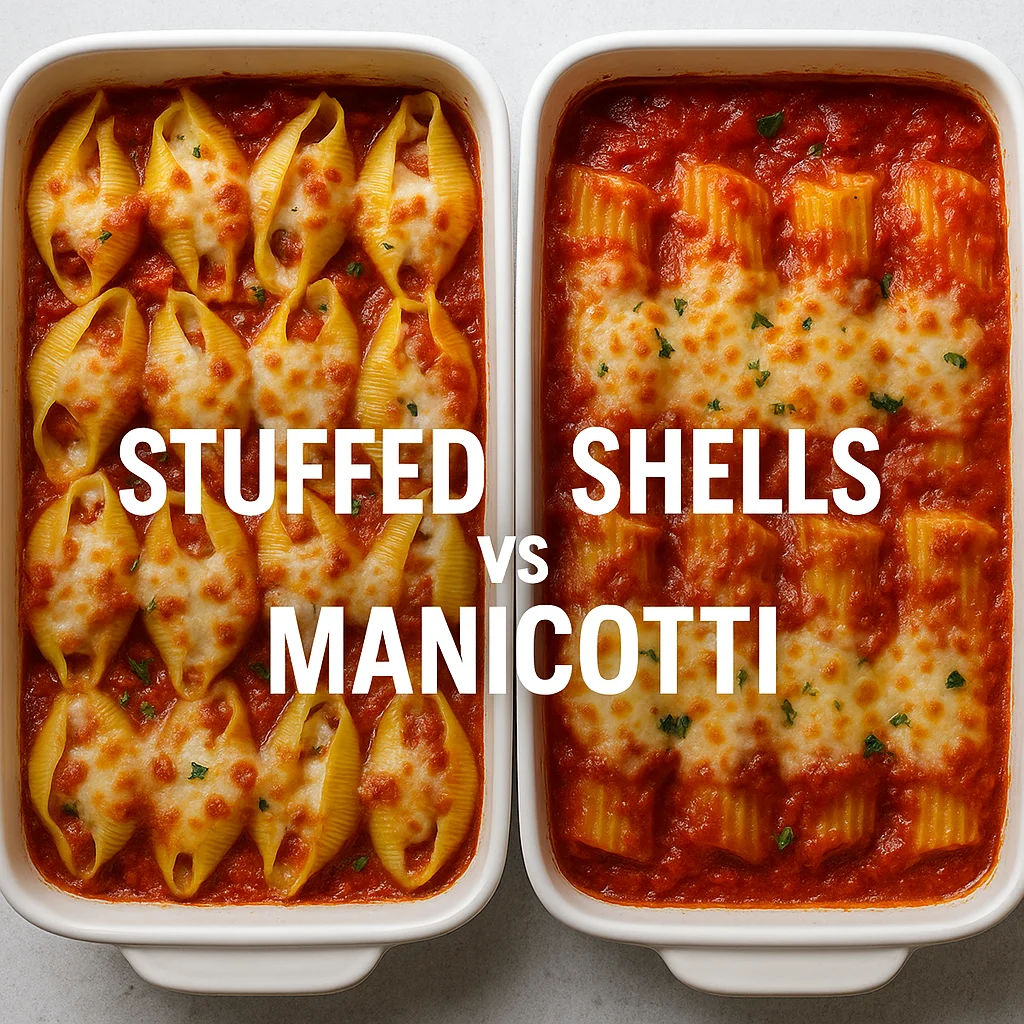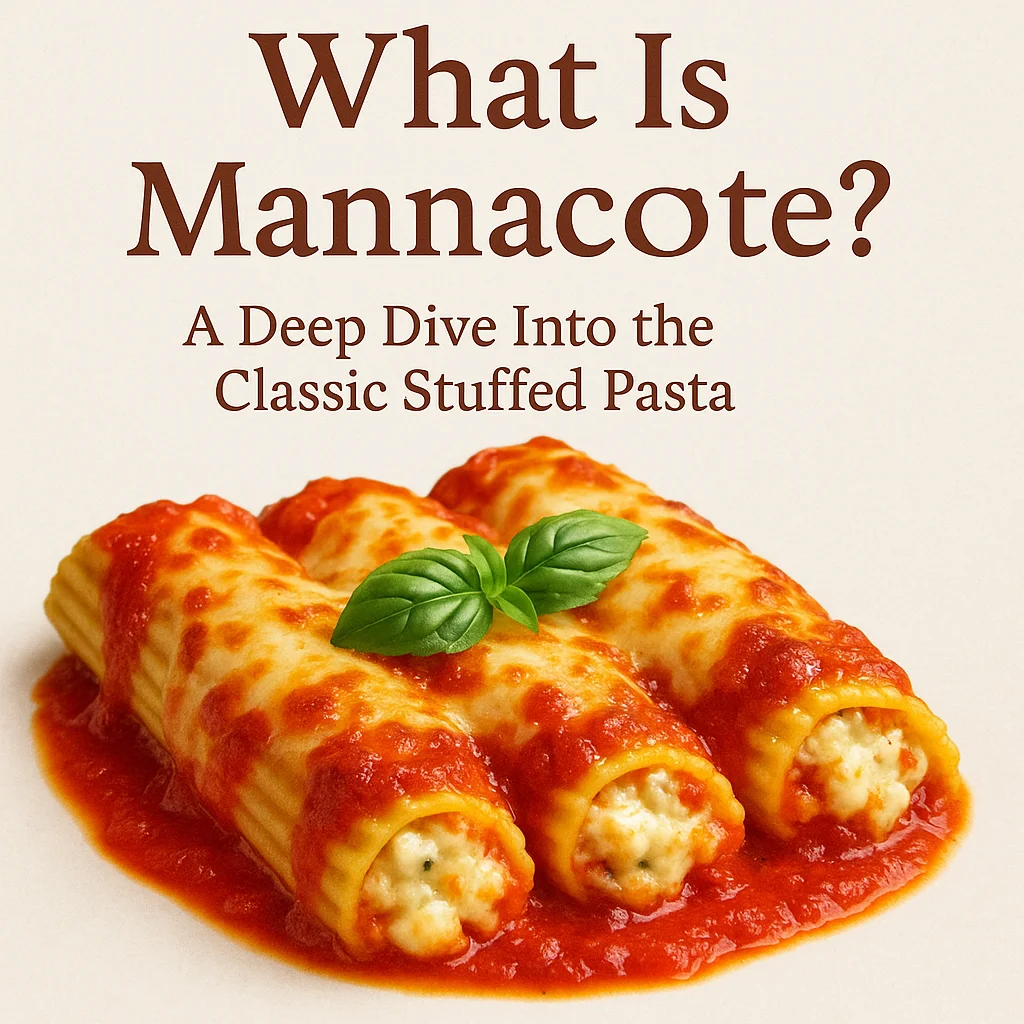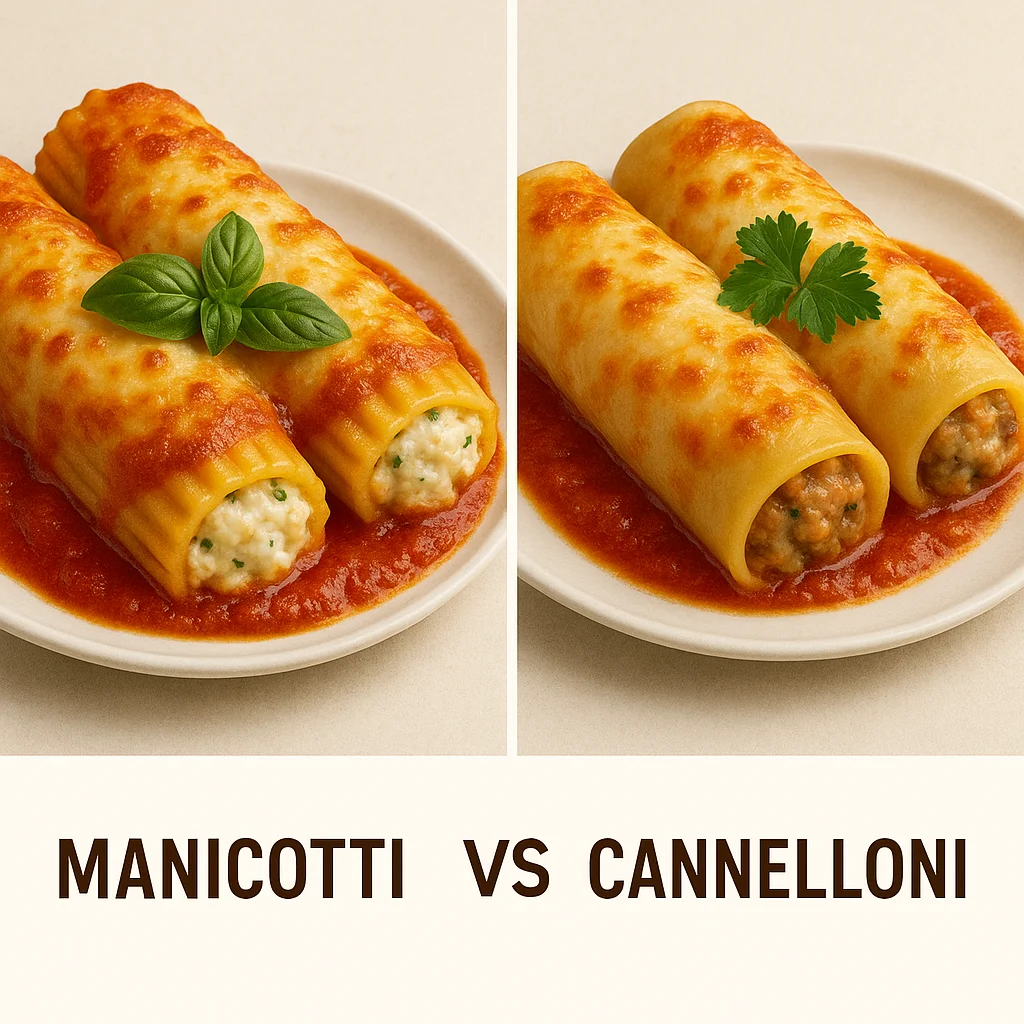When you’re craving comfort food drenched in savory sauce and rich cheese, two pasta classics usually come to mind: stuffed shells and manicotti. Stuffed shells or manicotti both are beloved Italian-American dishes that deliver a warm, satisfying bite, but they aren’t the same. If you’re wondering which one to make tonight, this detailed comparison will help you decide based on ingredients, preparation, texture, taste, and occasion.
What Are Stuffed Shells?
Stuffed shells, also known as conchiglioni, are large pasta shells shaped like seashells, designed to hold generous fillings. They’re most commonly filled with ricotta cheese, spinach, or meat, then topped with marinara or Alfredo sauce and baked until bubbly.
Key Features of Stuffed Shells:
- Shape: Open, curved shell with ridges.
- Filling Style: Filling is scooped or piped inside each shell.
- Common Fillings: Ricotta, spinach, ground beef, sausage, or a blend of cheeses.
- Sauces Used: Marinara, Alfredo, or pesto.
- Texture: Delicate yet firm, with crisp edges after baking.
What Is Manicotti?
Manicotti, meaning “little sleeves” in Italian, are large, tube-shaped pasta meant to be stuffed from end to end. The tubes are typically filled with ricotta cheese or meat mixtures and covered with sauce before baking.
Key Features of Manicotti:
- Shape: Large, smooth or ridged pasta tubes.
- Filling Style: Filling is piped or spooned into the tube’s interior.
- Common Fillings: Ricotta cheese with egg and herbs, ground meat, or vegetable medleys.
- Sauces Used: Tomato-based sauces, béchamel, or creamy Alfredo.
- Texture: More uniform and structured, with a hearty bite.
Stuffed Shells vs. Manicotti: What’s the Real Difference?
While both dishes share similarities in fillings and baking styles, their shapes, textures, and presentation differ significantly.
| Feature | Stuffed Shells | Manicotti |
| Pasta Shape | Curved, open shells | Smooth or ridged pasta tubes |
| Filling Method | Filled from the top | Filled through ends |
| Portion Size | Smaller, more per serving | Larger, usually 2–3 per serving |
| Ease of Filling | Easier with a spoon | May require piping bag |
| Baking Time | Slightly less | Often needs longer bake |
| Presentation | Rustic and layered | Neat and traditional |
Which One Is Easier to Make?
If you’re cooking for a crowd or preparing ahead, stuffed shells are usually easier and faster. Their open design makes them simple to fill and arrange in a dish without worrying about breaking the pasta.
Manicotti, on the other hand, takes a bit more finesse. The tubular pasta can crack if overcooked or if filled too forcefully. However, the end result tends to look more elegant and refined, making it a great choice for formal dinners or holiday meals.
Which One Tastes Better?
Taste preferences vary, but here’s a breakdown:
- Stuffed shells absorb sauce well in their curved folds, resulting in a more sauce-rich bite with crispy edges.
- Manicotti offers a more even balance between pasta and filling and tends to hold up better under heavier sauces.
If you prefer a more saucy, layered experience, go with stuffed shells. If you enjoy hearty bites with a stronger focus on the filling, manicotti might be your pick.
When to Make Stuffed Shells
Stuffed shells are perfect for:
- Family dinners
- Casual get-togethers
- Make-ahead freezer meals
- Potluck dishes
They’re easy to portion and serve, and kids usually love their cheesy appeal.
When to Make Manicotti
Manicotti is ideal for:
- Special occasions
- Holiday meals
- Romantic dinners at home
- Dinner parties
Its refined shape and dense filling make it feel more luxurious and celebratory.
Can You Use the Same Filling in Both?
Yes! You can use the same cheese mixture or meat blend in both stuffed shells and manicotti. A classic ricotta filling with Parmesan, mozzarella, eggs, parsley, and a pinch of nutmeg works beautifully in both. You can also customize with sautéed vegetables, ground meats, or even shredded chicken.
Sauce Ideas for Both
While traditional marinara is a classic for both, don’t be afraid to try these options:
- Alfredo Sauce: Rich and creamy, especially great for spinach or chicken fillings.
- Vodka Sauce: Adds a velvety, tomato-based flavor with a hint of tang.
- Pesto: Offers a fresh, herbaceous twist, particularly for vegetarian fillings.
- Béchamel: Light and smooth, perfect for layering with marinara for a two-tone bake.
Nutritional Differences
Though both are indulgent, nutritional differences can depend on portion size and ingredients used. Generally:
- Stuffed Shells may be slightly lighter due to smaller individual size and less dense filling.
- Manicotti can be more filling and calorie-dense due to its thicker pasta and generous stuffing.
Using whole wheat pasta, part-skim ricotta, or adding veggies can make both options more nutritious.
Final Verdict: Which One Should You Make?
It ultimately depends on your occasion, time, and cooking skill.
- Choose stuffed shells if you want something easy, customizable, and perfect for everyday meals.
- Choose manicotti if you’re aiming to impress with a refined presentation and don’t mind a bit more effort.
Both dishes offer incredible comfort and flavor. You really can’t go wrong—so why not try both at different times?


